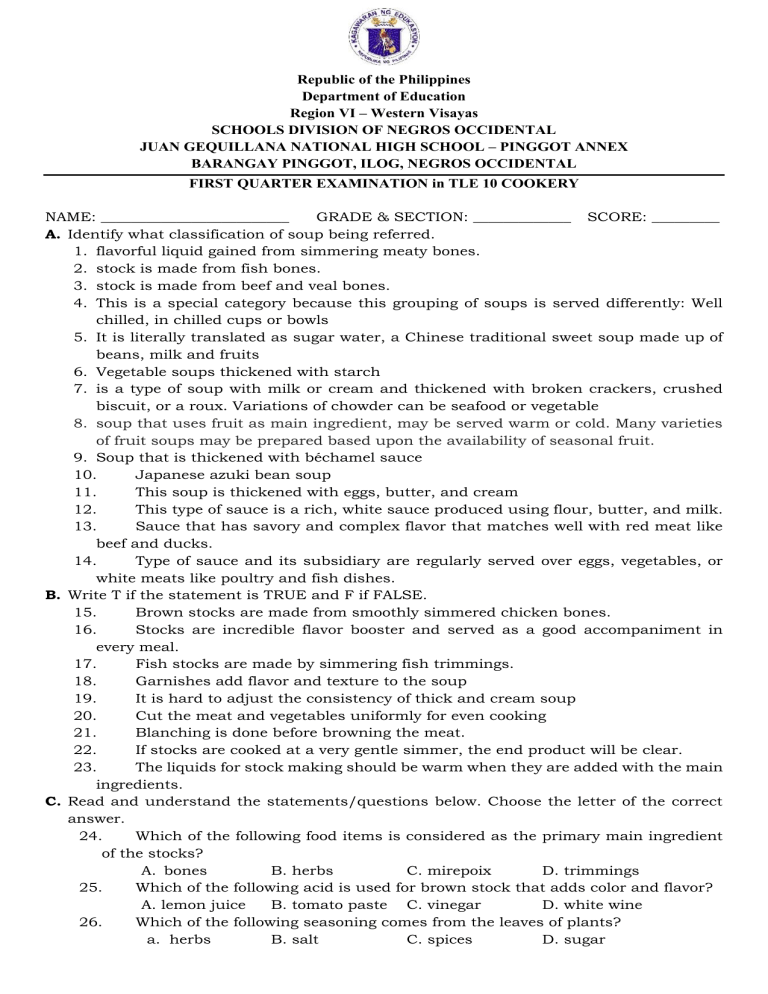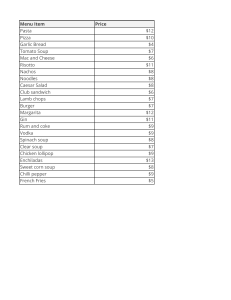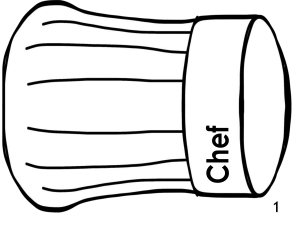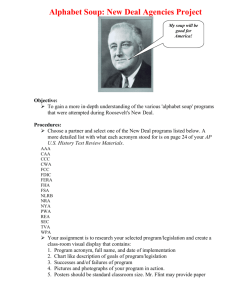
Republic of the Philippines Department of Education Region VI – Western Visayas SCHOOLS DIVISION OF NEGROS OCCIDENTAL JUAN GEQUILLANA NATIONAL HIGH SCHOOL – PINGGOT ANNEX BARANGAY PINGGOT, ILOG, NEGROS OCCIDENTAL FIRST QUARTER EXAMINATION in TLE 10 COOKERY NAME: _________________________ GRADE & SECTION: _____________ SCORE: _________ A. Identify what classification of soup being referred. 1. flavorful liquid gained from simmering meaty bones. 2. stock is made from fish bones. 3. stock is made from beef and veal bones. 4. This is a special category because this grouping of soups is served differently: Well chilled, in chilled cups or bowls 5. It is literally translated as sugar water, a Chinese traditional sweet soup made up of beans, milk and fruits 6. Vegetable soups thickened with starch 7. is a type of soup with milk or cream and thickened with broken crackers, crushed biscuit, or a roux. Variations of chowder can be seafood or vegetable 8. soup that uses fruit as main ingredient, may be served warm or cold. Many varieties of fruit soups may be prepared based upon the availability of seasonal fruit. 9. Soup that is thickened with béchamel sauce 10. Japanese azuki bean soup 11. This soup is thickened with eggs, butter, and cream 12. This type of sauce is a rich, white sauce produced using flour, butter, and milk. 13. Sauce that has savory and complex flavor that matches well with red meat like beef and ducks. 14. Type of sauce and its subsidiary are regularly served over eggs, vegetables, or white meats like poultry and fish dishes. B. Write T if the statement is TRUE and F if FALSE. 15. Brown stocks are made from smoothly simmered chicken bones. 16. Stocks are incredible flavor booster and served as a good accompaniment in every meal. 17. Fish stocks are made by simmering fish trimmings. 18. Garnishes add flavor and texture to the soup 19. It is hard to adjust the consistency of thick and cream soup 20. Cut the meat and vegetables uniformly for even cooking 21. Blanching is done before browning the meat. 22. If stocks are cooked at a very gentle simmer, the end product will be clear. 23. The liquids for stock making should be warm when they are added with the main ingredients. C. Read and understand the statements/questions below. Choose the letter of the correct answer. 24. Which of the following food items is considered as the primary main ingredient of the stocks? A. bones B. herbs C. mirepoix D. trimmings 25. Which of the following acid is used for brown stock that adds color and flavor? A. lemon juice B. tomato paste C. vinegar D. white wine 26. Which of the following seasoning comes from the leaves of plants? a. herbs B. salt C. spices D. sugar 27. What ingredient does Erma need that can aid to dissolve the connective tissues present in the meat? a. acid B. mirepoix C. herbs D. spices 28. Which of the following is the correct English translation of the French word “sachet d’ Spices? A. bag of spices B. cheesecloth of herbs C. cup of spices D. sack of herbs 29. This refers to by adding the water and stirring over the heat until all the brown drippings are dissolved and loosened. A. deglaze B. roast c. simmer d. skim 30. Most preferred meat for white stock. A. beef B. chicken c. fish d. veal 31. What is added after skimming the impurities floating at the surface of the stock? A. mirepoix B. salt c. bouquet garni d. a and c 32. Which of the following term means cooking in a moderate heat where small bubble appears at the bottom of the pot? A. blanching B. boiling c. roasting d. simmering 33. What is last step when preparing a stock? A. Cool the stock B. Refrigerate the stock C. Strain the stock D. Place the stock in the container 34. This sauce is made of pureed tomatoes. a. Béchamel B. Espagnole C. Tomato Sauce D. Velouté 35. This sauce is normally filled in as a sauce over meats or vegetables. A. Espagnole B. Hollandaise C. Tomato Sauce D. Velouté D. ENUMERATION Enumerate the five basic principles in preparing soup 36. 37. 38. 39. 40. Guidelines in preparing soup 41. 42. 43. 44. 45. 46. 47. 48. Basic types of Sauces 49. 50. 51. 52. Give the definitions of the following terms: 53.Spices PREPARED BY: MARY JOY A. LANIOG SUBJECT TEACHER




